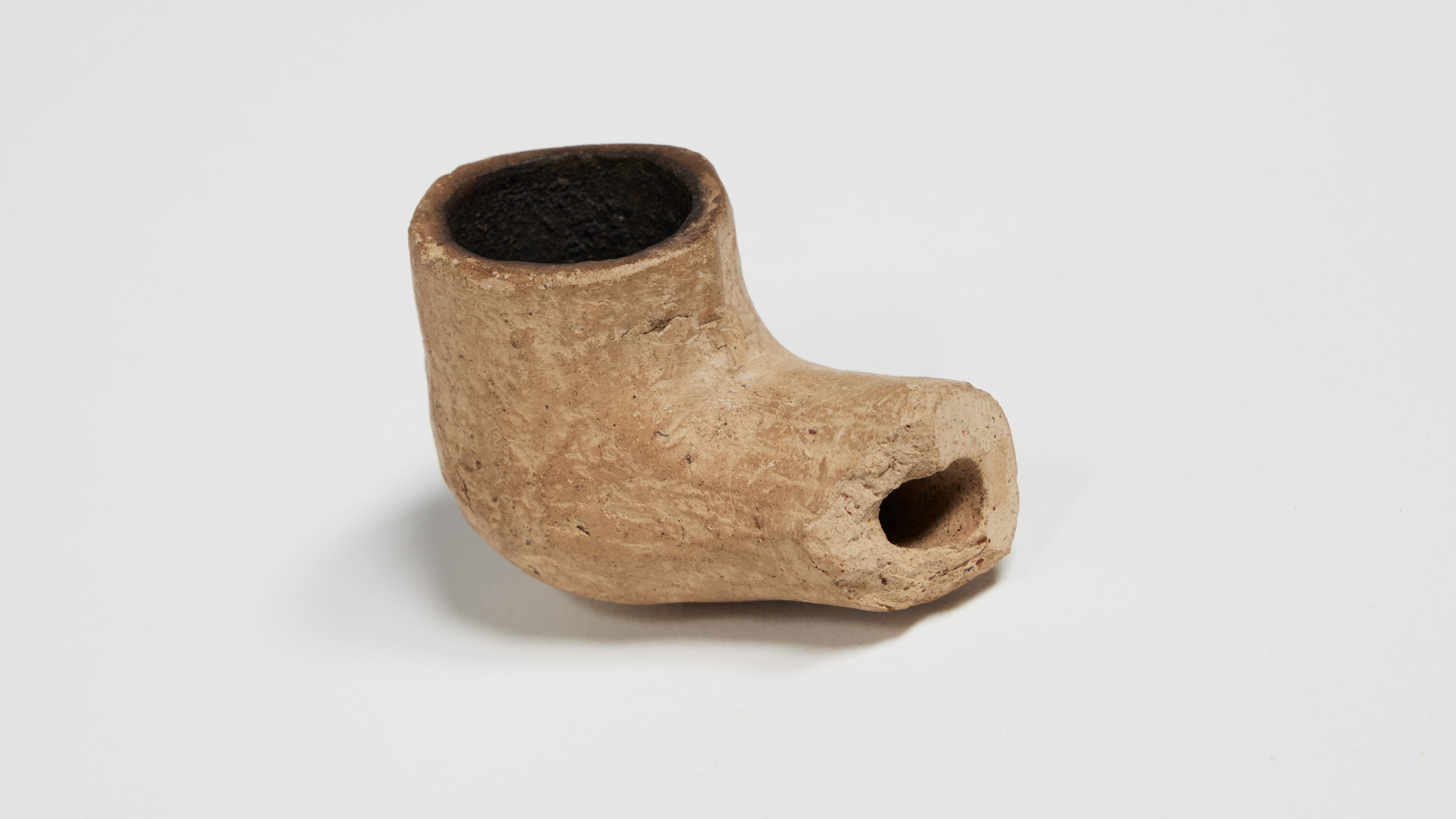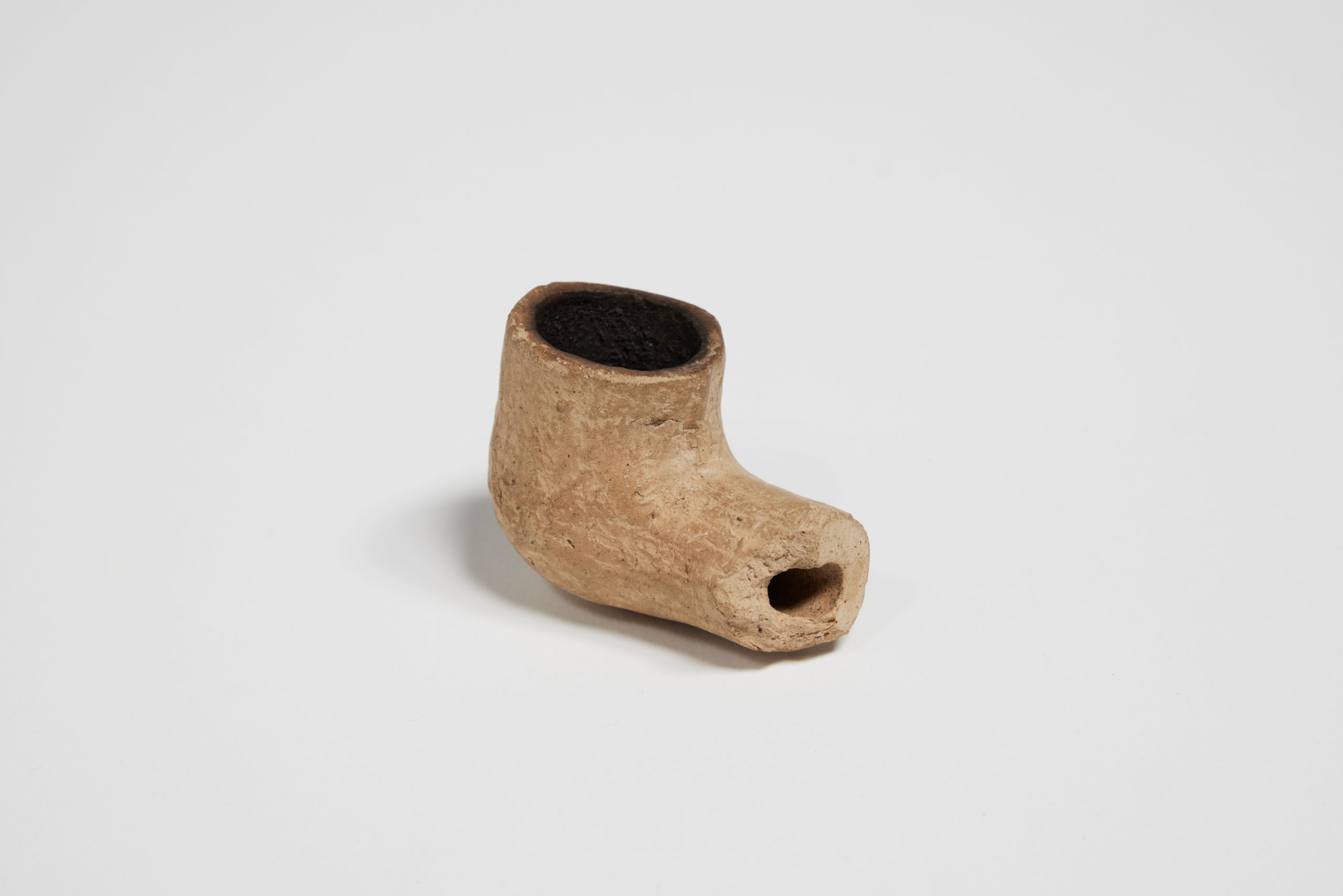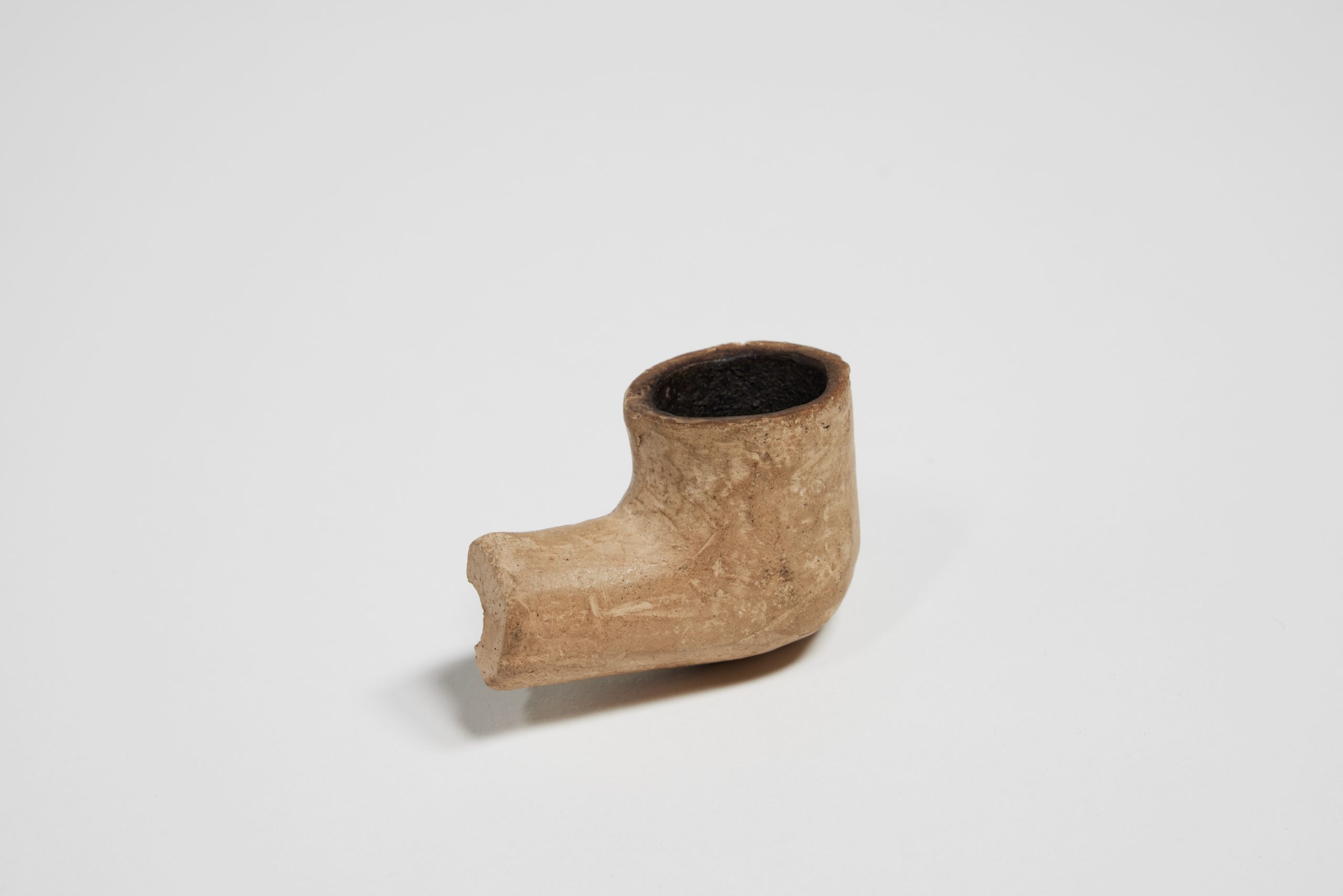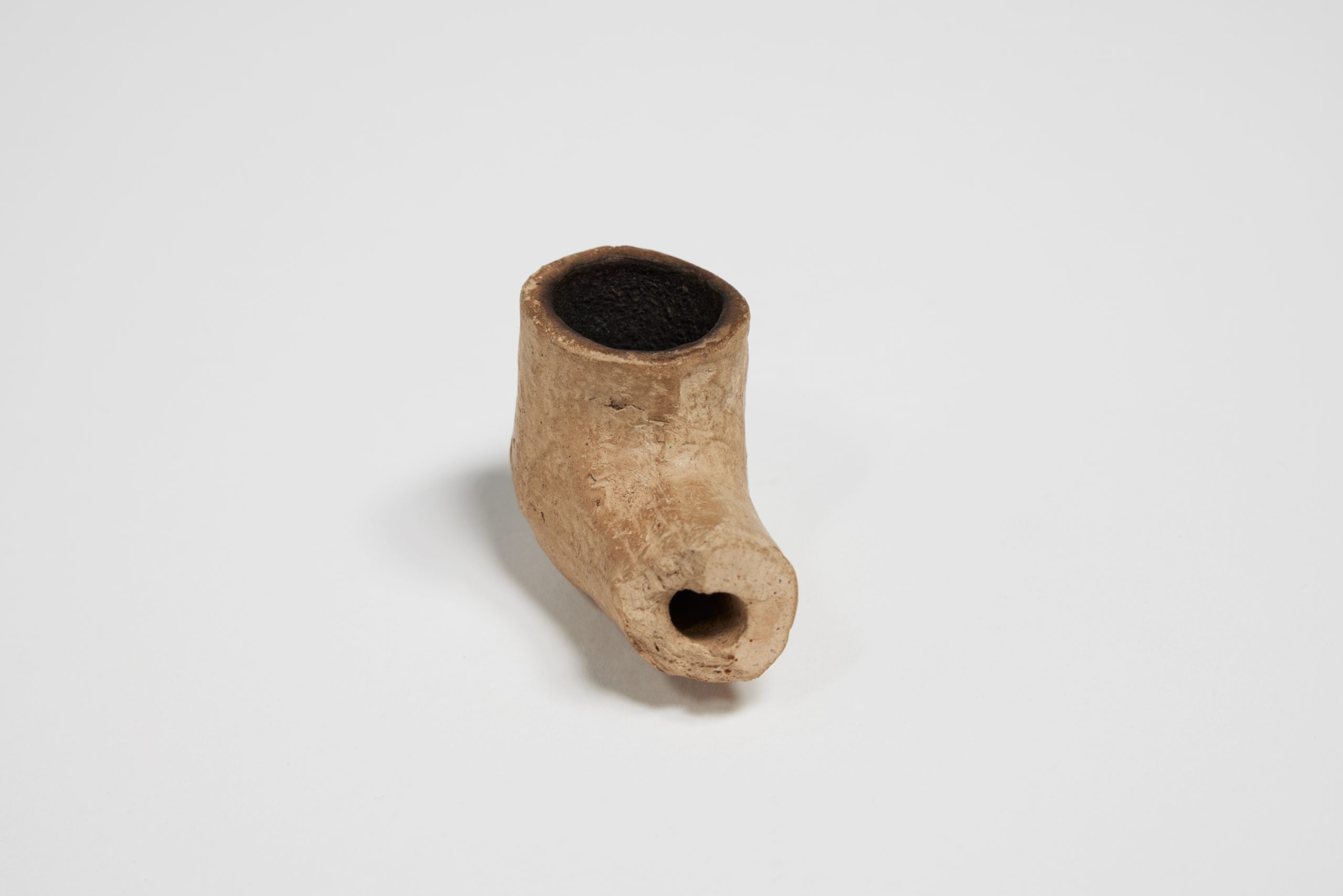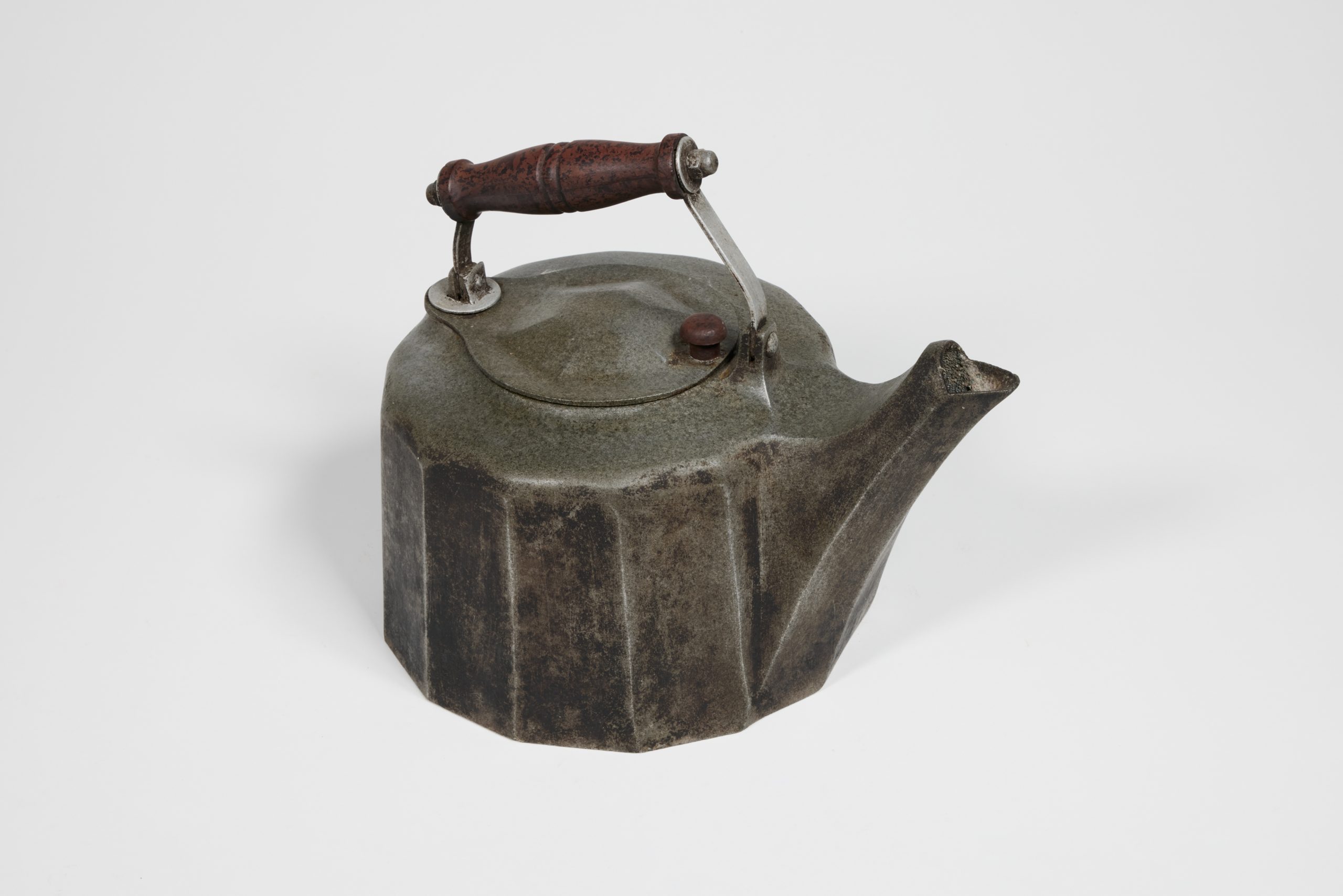The Art of Survival
A Changi Prisoner’s Handmade Pipe
With everyday commodities rarely provided to Australian Prisoners of War (POW) held at the Changi Prison in Singapore during WWII (1939-1945), former prisoner Bob Kelsey recalled that he and others made a host of items from anything they could get hold of. This included smoking pipes, made from bamboo, guava wood, or clay like the one pictured here.
Extreme boredom, exhausting labour in work parties, and limited access to food and medical care were among the challenges the prisoners faced daily. For many prisoners, smoking was one way to ease boredom or anxiety. Another Changi prisoner wrote that, ‘if tobacco was short most felt the lack of it acutely as nerves were highly strung through cruelty, air-raids, and overwork’.
But obtaining tobacco was challenging.
The Australian Comforts Fund sent packages of food and tobacco and personal items to POWs, but prisoners received few of these, sometimes because transport in the war zone was unreliable, or because the prison commander did not distribute them.
Tobacco was grown in the countryside surrounding Changi Prison, and at the prison canteen prisoners could buy a ‘kati’ (the Malay word for weight) of finely shredded local tobacco. The prisoners gave their own names to this poor quality, straggly tobacco, one distasteful name being ‘Granny’s Armpit’.
In September 1945, when Changi Prison was liberated it was a day of jubilation for surviving prisoners, but also a time of mourning for the 850 Changi prisoners who did not survive the internment.


